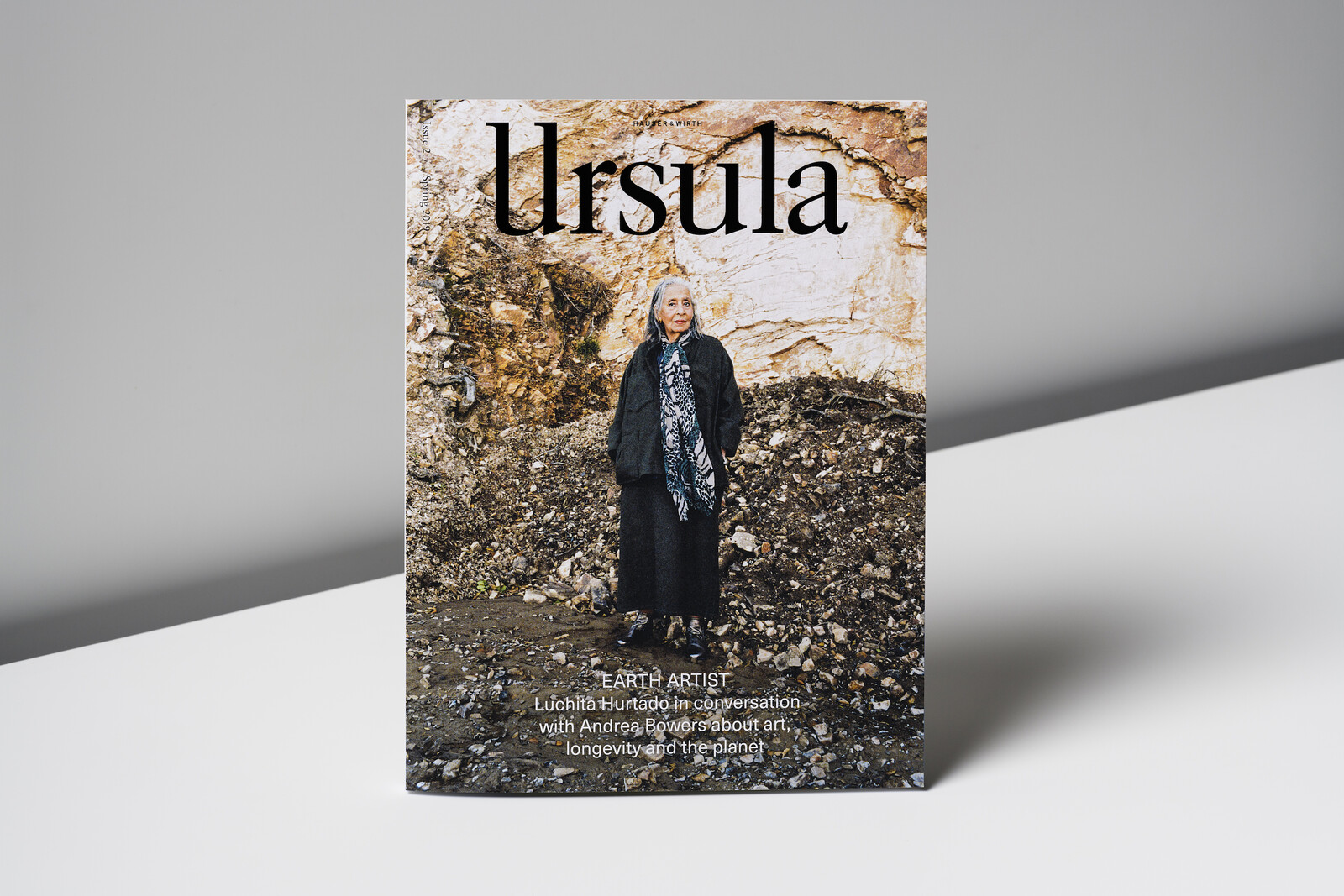“When you think of the first cave paintings, they were shouting. They wanted something to eat. ‘Give me meat!’”
—Luchita Hurtado, painter, Los Angeles, January 14, 2019
The second issue of Ursula, the quarterly magazine from Hauser & Wirth, available on newsstands and to subscribers March 25, features a cover conversation between Luchita Hurtado and Andrea Bowers that delves into contemporary politics, first-wave feminism, the environmental perils facing the planet, the painterly pleasures of color and 20th century art history (a good portion of which Hurtado, 98, has experienced firsthand). Hurtado is, in essence, an emerging artist with a body of work that reaches back more than 60 years, her paintings and drawings being widely seen and appreciated for the first time only now. “I don’t feel anger. I really don’t. I feel, you know: ‘How stupid of them.’ Maybe the people who were looking at what I was doing had no eye for the future and, therefore, no eye for the present.”
Other scenes from the issue:
From the archives: A profusely visual exchange of letters between Dieter Roth and Dorothy Iannone, partners in love and life who kept up their correspondence even after their separation. Dorothy to Deiter, 1998, the year of his death: “…a greeting on your 68th birthday—not as outwardly resplendent as we were then, but that much dearer to me now.”
Antiphony: A new poem by Cornelius Eady, National Book Award finalist, on a 2008 work by Rashid Johnson. “My dreads are clean, but are they too long? / My suit, a professor’s armor, does he consider it stolen?”
Unknown Pleasures: A comic essay by Jenny Jaskey, director of the Artist’s Institute, about navigating the shoals of class in the art world while making ends meet as a cocktail waitress. “I got the impression that Richie, like everyone in New York, was saying yes to more than I was offering.”
Epitaph: Linda Yablonsky on the singular life of Sister Wendy Beckett, art nun to the world. “Which other cloistered nun would have held up Jesus and Mary as exemplars of eroticism? For that matter, which television personality.”
A portfolio of previously unseen drawings by Phyllida Barlow, in preparation for new sculpture at the Royal Academy in London. “At the heart of all the processes,” Barlow says, “is something quite close to chaos.”
Postscript: Published for the first time, an interview by Bill Powers with the late Glenn O’Brien (1947–2017) about the life and work of the renegade artist Dash Snow (1981–2009). “In ancient Greece, they had ritual outcasts, the pharmakoi. Like Kurt Cobain, Dash was a version of the pharmakos, the sacrificial victim, but willingly so…”
The Keepers: A new column that looks at collecting as a mutant species of art-making. In this issue, we visit Jim Linderman, a self-taught connoisseur of outsider and folk art, whose eye has helped shape newfound institutional interest in work from well beyond the canon.
Afterimage: A look back on the long, perilous career of Don McCullin, one of Britain’s most celebrated living photographers, on the occasion of his retrospective at the Tate. “I feel I’ve spent a lifetime covering wars—60 years—and I don’t think for one second that my work helped to stop any war, or ever will.”
A portfolio of paintings by Jenny Holzer from her ongoing series based on redacted government documents, many related to the United States’ intractable post-9/11 presence in Iraq and Afghanistan. The paintings function as windows onto what Holzer once described as “the covert stuff that makes fate.”
An essay by Jori Finkel about the deep Los Angeles DNA of the artist Kaari Upson. “Could the macho posturing that defined much of the heavily male ‘Helter Skelter’ show be read as a parody of a certain brand of toxic masculinity? It’s a perverse idea—to turn ‘Helter Skelter’ into a feminist project.”


